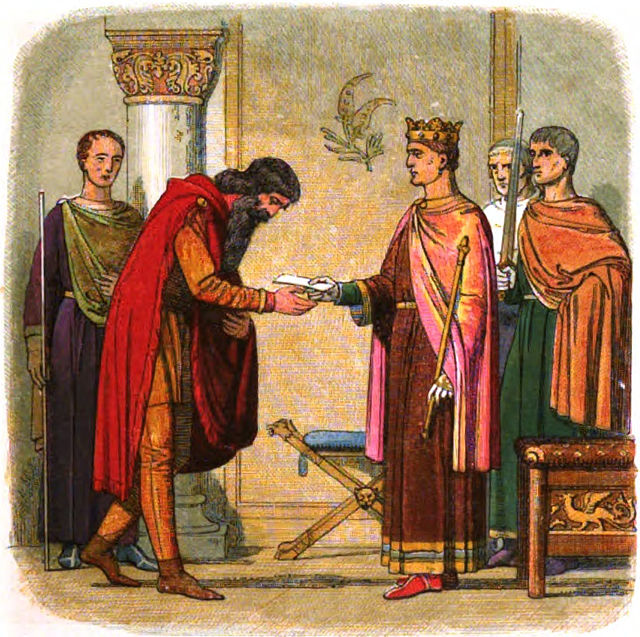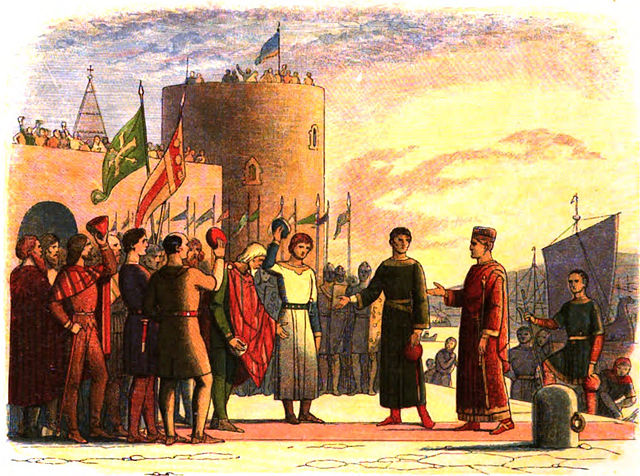Raymond Fitz William Fitz Gerald, nicknamed Le Gros, was a Cambro-Norman commander during the Norman invasion of Ireland. Raymond was among the first of a small band of Norman knights who landed on the South coast of Ireland before being reinforced by a larger force led by Richard de Clare, 2nd Earl of Pembroke. He was active consolidating Norman rule over Ireland before he retired to his estates in Waterford where he died in the late 12th century.
Raymond le Gros in a 13th-century manuscript, MS 700 of the National Library of Ireland, illustrating the text of the Expugnatio Hibernica, written by Gerald of Wales, a cousin of Raymond.
14th century tomb effigy of Raymond le Gros at Molana Abbey, now lost, as drawn by Daniel Grose (1766–1838)
Anglo-Norman invasion of Ireland
The Anglo-Norman invasion of Ireland took place during the late 12th century, when Anglo-Normans gradually conquered and acquired large swathes of land from the Irish, over which the kings of England then claimed sovereignty, all allegedly sanctioned by the papal bull Laudabiliter. At the time, Gaelic Ireland was made up of several kingdoms, with a High King claiming lordship over most of the other kings. The Anglo-Norman invasion was a watershed in Ireland's history, marking the beginning of more than 800 years of direct English and, later, British, conquest and colonialism in Ireland.
The Marriage of Strongbow and Aoife (1854), by Daniel Maclise
"Henry authorizes Dermod to levy forces", from A Chronicle of England (1864) by James Doyle
"Henry at Waterford", from A Chronicle of England (1864) by James Doyle
A depiction of Raymond FitzGerald from Gerald de Barri's Expugnatio Hibernica





